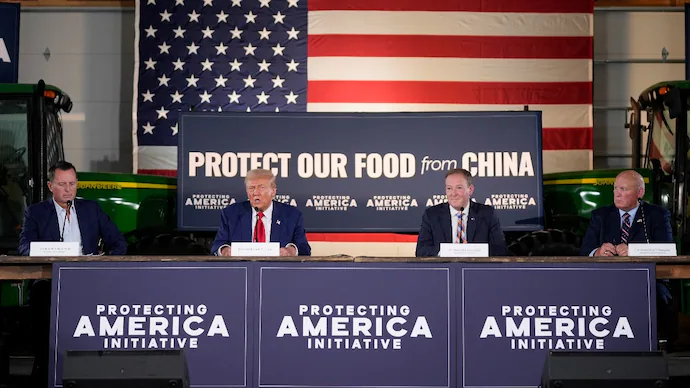In April 2025, President Donald Trump announced a series of tariffs targeting Chinese imports, with rates escalating up to 50% on certain goods. These measures, aimed at addressing trade imbalances and protecting domestic industries, have significant implications for the U.S. food and beverage sector. This article explores the multifaceted impact of these tariffs on various stakeholders within the industry, including producers, manufacturers, retailers, and consumers.
Increased Costs for Food and Beverage Manufacturers
The newly imposed tariffs directly affect the cost structure of food and beverage manufacturers that rely on imported ingredients and equipment from China. Essential items such as spices, flavorings, and specialized machinery are now subject to higher duties, leading to increased production costs. For instance, companies like PepsiCo and Conagra have sought exemptions for imports like cocoa, coffee, and certain packaging materials, emphasizing the lack of domestic alternatives and the potential for rising consumer prices .WSJReuters
Impact on Agricultural Exports and Farmers
China’s retaliatory tariffs, including a 34% levy on U.S. agricultural products, have severely impacted American farmers. Key exports such as soybeans, corn, and pork have seen diminished demand from one of their largest markets. This decline has led to surplus supplies domestically, driving down prices and squeezing farmers’ profit margins. The U.S. Department of Agriculture has implemented aid programs to mitigate these losses, but uncertainties persist .
Supply Chain Disruptions
The tariffs have disrupted established supply chains within the food and beverage industry. Companies that previously depended on Chinese imports are compelled to seek alternative suppliers, a process that is both time-consuming and costly. This shift can lead to delays in production and potential shortages of certain products in the market. For example, Pacific Valley Foods, a frozen food exporter, experienced a 70% revenue decline due to these trade tensions, highlighting the vulnerabilities in the supply chain .WSJ
Rising Consumer Prices
The increased costs borne by manufacturers and retailers are often passed on to consumers. As a result, shoppers may encounter higher prices for a range of food and beverage products. Analyses suggest that these tariffs could cost U.S. households nearly $4,000 annually, disproportionately affecting low- and middle-income families . This inflationary pressure can alter consumer behavior, leading to shifts in purchasing patterns and a potential decrease in overall consumption.ABC News
Challenges for Restaurants and Hospitality Sector
The restaurant industry, heavily reliant on imported food items, kitchen equipment, and packaging materials, faces increased operational costs due to the tariffs. Many establishments may need to adjust their pricing strategies, potentially leading to higher menu prices. The National Restaurant Association has expressed concerns about these developments, noting that U.S. agriculture alone cannot meet the total demand from the restaurant industry .
Strategic Responses and Adaptations
In response to these challenges, companies within the food and beverage industry are exploring various strategies:
- Diversifying Supply Chains: Businesses are seeking alternative suppliers in countries not affected by the tariffs, such as Mexico and Canada, to mitigate cost increases.
- Domestic Sourcing: Some companies are investing in domestic production capabilities to reduce reliance on imports, though this requires significant capital and time.
- Product Innovation: Reformulating products to use locally sourced ingredients or alternative materials can help circumvent tariff-related costs.
- Advocacy for Exemptions: Industry groups are actively lobbying for exemptions on specific products to alleviate the financial burden on manufacturers and consumers.Reuters
Long-Term Implications
In conclusion, President Trump’s tariffs on China have introduced significant challenges for the U.S. food and beverage industry. From increased production costs and supply chain disruptions to rising consumer prices and pressures on the agricultural sector, the effects are widespread. Stakeholders are compelled to adapt strategically to navigate this complex landscape, with the long-term goal of fostering a more robust and self-sufficient industry.




